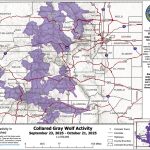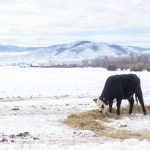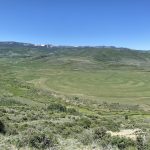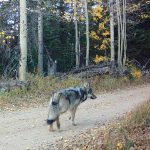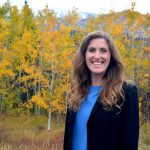Seedling replanting needed in North Routt from 2017 severe wildfire behavior
Impacts in Big Red Park continue 8 years later
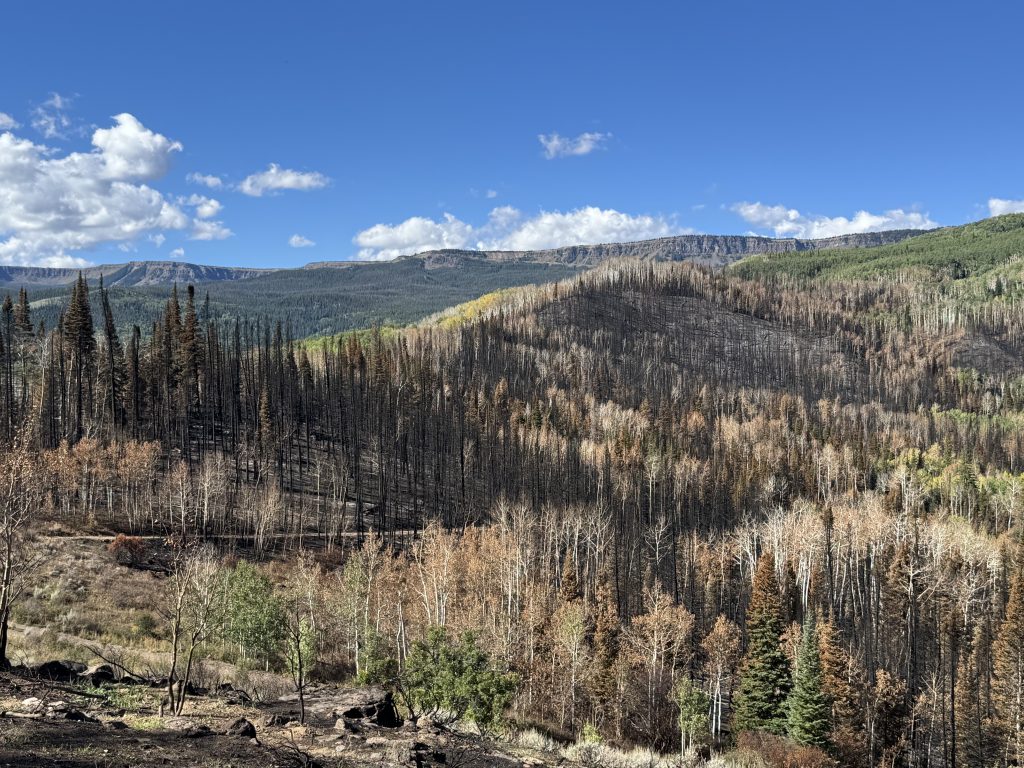
Colorado State Forest Service/Courtesy photo
With multiple large wildfires in Routt County since 2002, including the most recent Crosho Fire, the Big Red Park Fire from summer 2017 in northern Routt County may be becoming a forgotten memory to community members.
However, the Big Red Fire, started by a lightning strike on Aug. 19, 2017, continues to impact forest recovery efforts today.
“Our burn scars are failing to restock areas — that were once forest — with adequate tree cover,” said Sam Hahn, supervisory forester with the U.S. Forest Service office in Steamboat Springs. “We’ve identified that a number of wildfires may shift over to grasses, shrubs, forbs without manual intervention.”
Hahn spoke to an audience at the Routt County Climate Action Plan open house Oct. 22 at the Bud Werner Memorial Library in Steamboat, addressing progress on the plan’s Land Use Working Group recommended action to “increase capacity to accelerate tree-planting on wildfire burn areas and other forested areas with need and potential for reforestation.”
During his public presentation, the forester said the need for humans to manually assist in returning tree cover to severe burn scar areas is due to the “increased magnitude of recent fires” and the fact that “longer fire seasons have recently challenged forest ecosystem resilience.”
Hahn explained that the increase in wildfire severity has destroyed seed in cones on trees and on the ground, impacting the ability for forested areas to reproduce. High-severity burned patches have increased through the years, disrupting the natural ecology and increasing forest fragmentation, so once-forested spaces are now at risk of vegetation-type conversion, Hahn said.
Hahn said he was not allowed to answer follow-up questions outside the public talk due to the current government shutdown.
“Unfortunately, the USFS has prohibited employees from talking and sharing information with members of the press during the shutdown,” Hahn wrote in an email.
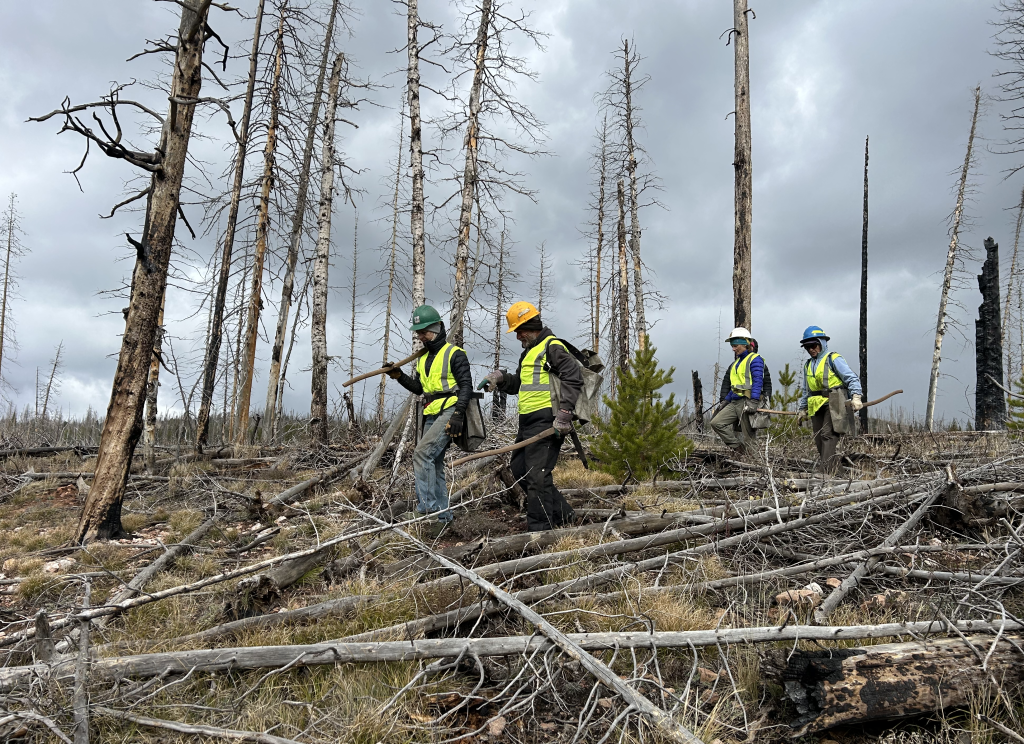
Carolina Manriquez, lead forester at Colorado State Forest Service and past board member of the Routt County Wildfire Mitigation Council, noted that some sections of all the major wildfire burn scars in Routt County from within last decade will need to be replanted by hand as fire behavior has become increasingly more severe in recent years than it was historically.
“The last 10 years have shown increased burn severity,” Manriquez said. “Fires are burning hotter, and forests are a lot more stressed. The burn severity impacts soil and seed availability and thus regrowth.”
Whether burn scar areas need to be replanted depends on many variables including how critical that area is to overall watershed health issues, Manriquez noted. For example, the Crosho fire this summer that burned 2,073 acres northwest of Yampa includes an estimated 400 acres of severe burn that may need to be replanted eventually to return the previous type of forest cover, Manriquez said.
Dakota Dolan, forest projects manager at the nonprofit Western Resilience Center (until recently known as Yampa Valley Sustainability Council), has worked closely with the U.S. Forest Service to organize Yampa Valley Climate Crew citizen volunteers to help with burn scar regeneration studies and seedling replanting.
The wildfire experts explained that an abundance of beetle-kill dead conifer trees, drought, previous decades of fire suppression, and hot and dry conditions during the Big Red Fire all contributed to the burn severity of that 2017 fire located about five miles south of the Wyoming border.
Dolan explained the forestry principles of how trees are more advantageous to forest regrowth compared to conversion to shrub lands. Trees are more effective at carbon sequestration, soil stabilization, snow storage and water absorption, for example. When a burn scar converts to a different ecosystem, that can impact a host of wildlife and plant populations and factors including runoff rates, Dolan said.
“It’s important to keep trees on the landscape because they have much more power in stabilizing the soil for water quality than shrubs and grasses do,” Dolan said.
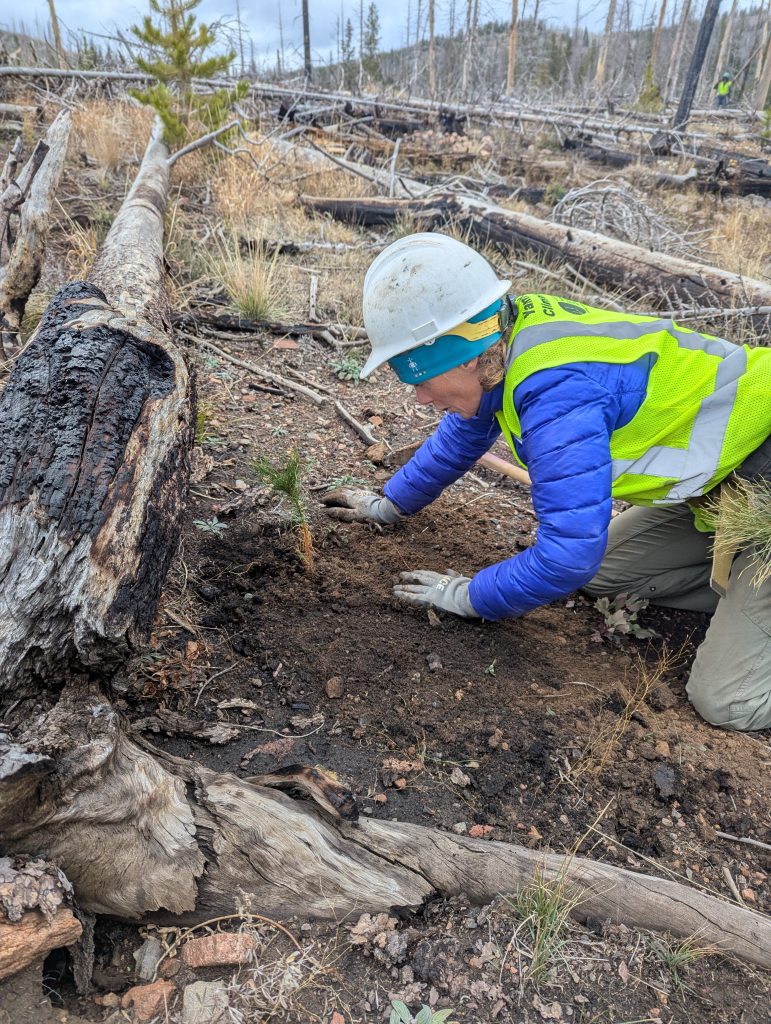
The experts explained that replanting on high-severity burned areas on steeper slopes in a watershed or next to a waterbody are especially important.
Three years after the Big Red Fire, foresters checked for regrowth, and since 2020, federal foresters have identified areas in northern Routt County most in need of planting, Hahn said.
Since 2024, the Forest Service and the sustainability council/resilience center formally partnered to complete regeneration surveys, cone collection and tree-planting projects. In 2025, the Routt National Forest post-fire tree planting work was authorized to plant native tree species in northern Routt County and other fire burn scars on roughly 104,000 acres, Hahn noted.
“The regeneration surveys require a careful eye looking for those small seedlings that are about thumb-size on the ground,” Hahn told the audience.
This year, the Forest Service led “our biggest planting effort ever on the Hahn’s Peak district, with 196 acres in Big Red Burn scar that we identified as being poorly stocked and needing planting by professionals,” Hahn said. The project included planting 192,000 tree seedlings of lodgepole pine, Engelmann spruce and Douglas fir. In addition, earlier this month, 1,500 seedlings were planted by volunteers.
“The burn scar plantings are a great example of successful, on-the-ground Climate Action Plan recommendation implementation helping us move toward healthier forests that maximize carbon sequestration,” said Ashley Dean, senior manager for collaborative initiatives at the Western Resilience Center.
Follow-up work planned in the Big Red Fire burn scar includes planting about 200 additional acres and identifying more acreage for volunteers to help, Hahn said. The Forest Service has identified 200- to 400-acre planting projects to complete through 2029.
Yampa Valley Climate Crew volunteers previously planted tree seedlings in the Muddy Slide Fire burn scar in southern Routt County on steeper slopes on private property adjacent to Forest Service land, Dolan said. This summer, Climate Crew volunteers completed regeneration surveys on public lands in the Muddy Slide burn scar.
With reduced Forest Service staffing this summer, volunteers were called upon to complete Muddy Slide regeneration surveys for eight days on 139 plots across 417 acres surveying areas that Forest Service staff deemed might need to replanted, Dolan said.
Dolan said the regeneration surveys show both the Muddy Slide and Big Red burn scars “had areas that seemed to not be growing back at all, and both had pockets of successful generation.”
To reach Suzie Romig, call 970-871-4205 or email sromig@SteamboatPilot.com.

Support Local Journalism

Support Local Journalism
Readers around Steamboat and Routt County make the Steamboat Pilot & Today’s work possible. Your financial contribution supports our efforts to deliver quality, locally relevant journalism.
Now more than ever, your support is critical to help us keep our community informed about the evolving coronavirus pandemic and the impact it is having locally. Every contribution, however large or small, will make a difference.
Each donation will be used exclusively for the development and creation of increased news coverage.


